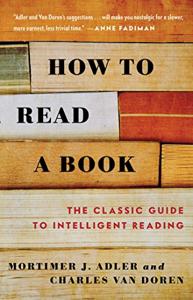
Want to learn the ideas in How to Read a Book better than ever? Read the world’s #1 book summary of How to Read a Book by Mortimer J. Adler, Charles Van Doren here.
Read a brief 1-Page Summary or watch video summaries curated by our expert team. Note: this book guide is not affiliated with or endorsed by the publisher or author, and we always encourage you to purchase and read the full book.
Video Summaries of How to Read a Book
We’ve scoured the Internet for the very best videos on How to Read a Book, from high-quality videos summaries to interviews or commentary by Mortimer J. Adler, Charles Van Doren.
1-Page Summary of How to Read a Book
Overview
10 The book “Days to Faster Reading” will help you read faster and retain more information. It lists the mindsets that inhibit effective reading, such as negative thinking, and replaces them with highly efficient techniques for reading.
Did you find it difficult to read the assigned texts in school? Probably so. We love reading for pleasure, but when we have to work on books and articles that don’t interest us, we struggle to stay engaged. That doesn’t have to be the case. There is a method of reading even dry texts quickly and efficiently. A cult hit in the 1940s, How To Read A Book can help you get more from your reading whether you need to bone up on a novel for English class or learn about a new marketing text at work.
In this passage, you will learn why you can’t be a passive reader and need to use your active reading skills. You’ll also find out how the table of contents is useful for finding information quickly and that even very intelligent people might need a dictionary if they don’t understand some of the words in a document.
Big Idea #1: To get the most out of books, you need to read actively. You can do this by following some basic rules.
Do you take any moment to read a good book? Sometimes, we don’t need to change our approach when reading for fun. However, there are times when we need to understand and select information quickly from text. Let’s look at some tips and tricks on how to do that best.
First, the basics. Reading is an active process. It’s like a ball game where one party throws the ball and the other party has to make an effort in order to catch it. That is, the “catcher” – or reader – has to make an effort in order to understand what the author, who throws the ball, is trying to convey.





